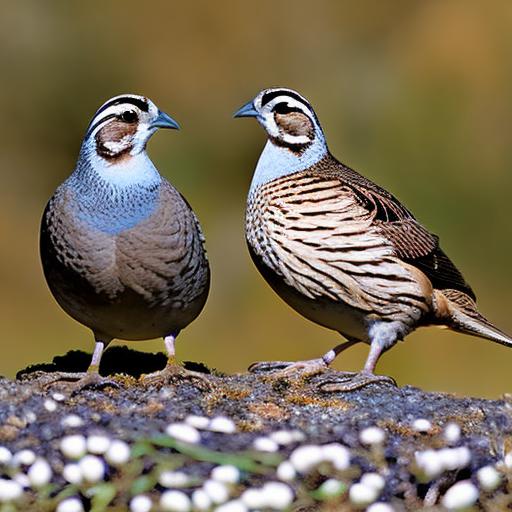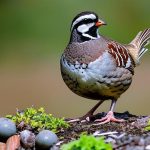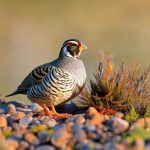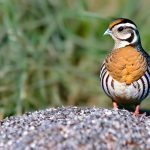California quail, also known as Valley quail, are popular game birds native to the western United States. They are known for their striking appearance, with a distinctive teardrop-shaped plume on their heads and a vibrant chestnut and black plumage. While they are primarily kept for hunting and ornamental purposes, California quail can also make charming and low-maintenance pets for bird enthusiasts. These small, ground-dwelling birds are known for their social nature and gentle disposition, making them a delightful addition to any aviary or backyard setting.
California quail are relatively easy to care for and can thrive in a variety of environments, making them an ideal choice for both experienced and novice bird keepers. With the right housing, diet, and enrichment, these birds can live long and healthy lives in captivity. In this article, we will explore the various aspects of keeping California quail as pets, including housing and enclosure requirements, diet and feeding guidelines, health and veterinary care, enrichment and mental stimulation, breeding and reproduction, as well as legal considerations and regulations.
Key Takeaways
- California quail make unique and interesting pets due to their beautiful appearance and social nature
- Housing for California quail should include a spacious enclosure with plenty of hiding spots and perches
- A balanced diet for California quail should include a mix of seeds, grains, greens, and insects
- Regular health check-ups and access to a qualified avian veterinarian are essential for the well-being of California quail
- Providing mental stimulation through foraging activities and social interaction is important for the overall happiness of California quail
- Breeding California quail requires careful consideration of genetics and proper nesting materials
- It is important to be aware of local regulations and obtain any necessary permits before keeping California quail as pets
Housing and Enclosure Requirements for California Quail
When it comes to housing California quail, it’s important to provide them with a spacious and secure enclosure that mimics their natural habitat. A large aviary or outdoor pen is ideal for these birds, as it allows them to forage, dust bathe, and socialize with their flock mates. The enclosure should be constructed with sturdy wire mesh to prevent predators from gaining access, and it should also have a solid roof to protect the quail from aerial threats.
The flooring of the enclosure should consist of a soft substrate such as sand or straw, which allows the quail to scratch and dust bathe. Additionally, providing natural vegetation and hiding spots within the enclosure can help create a stimulating environment for the quail. It’s important to ensure that the enclosure is well-ventilated and receives adequate sunlight throughout the day. In colder climates, a heated shelter or insulated nesting boxes should be provided to protect the quail from extreme temperatures. Overall, the key to successful housing for California quail is to prioritize space, security, and environmental enrichment.
Diet and Feeding Guidelines for California Quail
In the wild, California quail are omnivorous birds that primarily feed on a diet of seeds, insects, and vegetation. When kept as pets, it’s important to replicate this natural diet to ensure their nutritional needs are met. A high-quality game bird feed or poultry feed can serve as the foundation of their diet, providing essential nutrients such as protein, vitamins, and minerals. Additionally, offering a variety of fresh greens, fruits, and vegetables can help supplement their diet and provide enrichment.
It’s important to provide access to clean water at all times, especially during hot weather or when feeding a dry diet. In addition to their main diet, offering grit or small stones can aid in digestion by helping the quail grind their food in their gizzards. It’s important to monitor their food intake and adjust portion sizes accordingly to prevent obesity or malnutrition. Overall, a balanced diet that mimics their natural foraging habits is essential for the health and well-being of California quail in captivity.
Health and Veterinary Care for California Quail
Maintaining the health of California quail in captivity requires regular monitoring and preventive care. It’s important to observe the birds daily for any signs of illness or injury, as early detection can greatly improve the chances of successful treatment. Common health issues in quail include respiratory infections, parasites, and injuries from predators or aggressive flock mates. If any health concerns arise, it’s crucial to seek veterinary care from a professional with experience in avian medicine.
In addition to regular health checks, providing a clean and hygienic living environment is essential for preventing disease and maintaining overall well-being. This includes regular cleaning of the enclosure, providing fresh water daily, and ensuring proper ventilation to minimize the risk of respiratory issues. It’s also important to quarantine any new birds before introducing them to an existing flock to prevent the spread of disease. By prioritizing preventive care and seeking prompt veterinary attention when needed, pet owners can help ensure the long-term health and happiness of their California quail.
Enrichment and Mental Stimulation for California Quail
California quail are social and active birds that thrive on mental stimulation and physical activity. Providing enrichment in their environment can help prevent boredom and encourage natural behaviors such as foraging and dust bathing. Simple additions such as perches, branches, and hiding spots can create opportunities for exploration and exercise. Additionally, scattering food throughout the enclosure or providing puzzle feeders can encourage natural foraging behaviors and keep the quail mentally engaged.
To further stimulate their minds, introducing novel objects or toys into the enclosure can provide entertainment and enrichment. This can include items such as hanging mirrors, balls, or even simple DIY toys made from safe materials. It’s important to rotate these items regularly to prevent habituation and maintain interest. By providing a stimulating environment that encourages natural behaviors, pet owners can help ensure the mental well-being of their California quail.
Breeding and Reproduction of California Quail
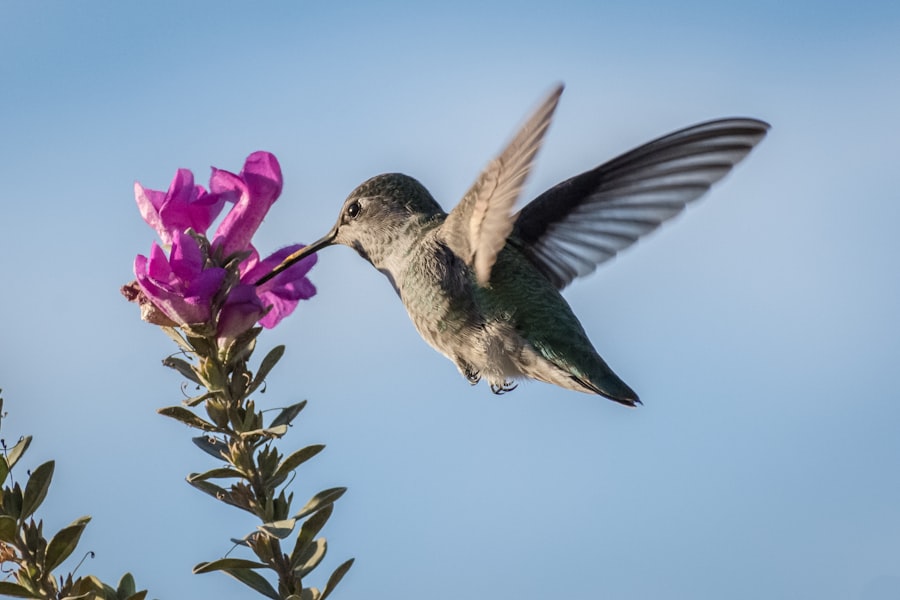
Breeding California quail in captivity can be a rewarding experience for bird enthusiasts. Before attempting to breed quail, it’s important to ensure that the birds are mature and in good health. Providing a suitable nesting area within the enclosure is essential for successful breeding. This can include providing natural materials such as straw or grass for the female quail to build her nest.
Once the eggs are laid, it’s important to provide a quiet and secure environment for the female to incubate them. If breeding is successful, it’s important to monitor the chicks closely and provide supplemental heat if needed. Additionally, separating breeding pairs from the main flock can help reduce stress and aggression during the breeding season. By understanding the natural breeding behaviors of California quail and providing appropriate nesting areas and care, pet owners can help facilitate successful reproduction in captivity.
Legal Considerations and Regulations for Keeping California Quail as Pets
Before acquiring California quail as pets, it’s important for potential owners to be aware of any legal considerations and regulations regarding their ownership. In some areas, keeping game birds such as California quail may require a permit or license from local wildlife authorities. It’s important to research local laws and regulations regarding the ownership of game birds before acquiring them.
Additionally, it’s important to consider ethical considerations when keeping California quail as pets. This includes providing a suitable environment that meets their physical and behavioral needs, as well as ensuring that they are obtained from reputable sources that prioritize animal welfare. By understanding and adhering to legal considerations and ethical standards, pet owners can help ensure that their California quail are kept responsibly and in compliance with local regulations.
In conclusion, California quail can make charming and low-maintenance pets for bird enthusiasts when provided with appropriate care and housing. By understanding their unique needs in terms of housing, diet, enrichment, health care, breeding, and legal considerations, pet owners can ensure the well-being of these delightful birds in captivity. With proper attention to their physical and behavioral needs, California quail can thrive as pets and bring joy to their owners for many years to come.
If you’re considering keeping California quail as pets, you may also be interested in learning about the compatibility of guinea fowl with chickens. Poultry Wizard has a helpful article on whether guinea fowl can live with chickens, offering insights into their cohabitation and potential benefits. Check it out here.
FAQs
What are the basic requirements for keeping California quail as pets?
California quail require a spacious aviary with plenty of room to roam and fly. They also need access to a varied diet of seeds, insects, and greens, as well as fresh water and shelter from the elements.
Are California quail social animals that require companionship?
Yes, California quail are social birds and thrive in the company of their own kind. It is recommended to keep them in small groups or pairs to ensure their well-being.
What should be included in the diet of California quail?
California quail should be fed a diet that includes a variety of seeds, such as millet, sunflower seeds, and cracked corn, as well as insects and greens. It is important to provide a balanced and nutritious diet to keep them healthy.
Do California quail require any special care or attention?
California quail require a clean and well-maintained aviary, regular access to fresh water, and protection from predators. They also benefit from regular observation and interaction to ensure their well-being.
Are California quail legal to keep as pets in all areas?
It is important to check local regulations and laws regarding the keeping of California quail as pets, as they may be subject to specific restrictions or requirements in certain areas.
Meet Walter, the feathered-friend fanatic of Florida! Nestled in the sunshine state, Walter struts through life with his feathered companions, clucking his way to happiness. With a coop that’s fancier than a five-star hotel, he’s the Don Juan of the chicken world. When he’s not teaching his hens to do the cha-cha, you’ll find him in a heated debate with his prized rooster, Sir Clucks-a-Lot. Walter’s poultry passion is no yolk; he’s the sunny-side-up guy you never knew you needed in your flock of friends!

